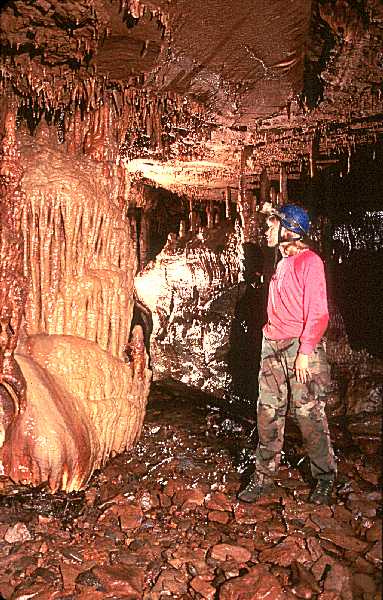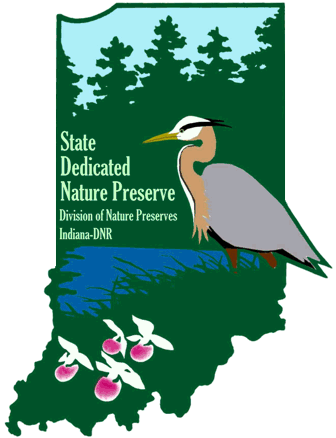Buddha Karst Preserve
 On June 25, 2001, the IKC purchased the Buddha Karst Preserve. The property consists of 37 acres of rolling land containing several wet-weather swallets, numerous sinkholes, two sinkhole ponds, and two caves. Buddha Cave was featured on the cover of the guidebook for the 1992 NSS Convention (see photo at right).
On June 25, 2001, the IKC purchased the Buddha Karst Preserve. The property consists of 37 acres of rolling land containing several wet-weather swallets, numerous sinkholes, two sinkhole ponds, and two caves. Buddha Cave was featured on the cover of the guidebook for the 1992 NSS Convention (see photo at right).
Recreationally, this cave has a little of everything to offer: A large entrance room, some crawling, exposed climbs, a 20-foot ladder/rope drop, and a nicely-decorated lower stream passage. The caves on the preserve also harbor a diverse troglobitic fauna, including three arthropods of extreme rarity.
 Buddha Karst Preserve offers excellent opportunities for education, restoration and recreation. The IKC board has approved a management plan, dedication as a state nature preserve is complete, an interpretive trail and informational kiosk have been installed, and the property has been enrolled in the DNR Classified Forest and Wildlands program.
Buddha Karst Preserve offers excellent opportunities for education, restoration and recreation. The IKC board has approved a management plan, dedication as a state nature preserve is complete, an interpretive trail and informational kiosk have been installed, and the property has been enrolled in the DNR Classified Forest and Wildlands program.
As of February 2002, fundraising for the initial purchase of Buddha Karst Preserve was completed. The IKC greatly appreciates the contributions of everyone who made a donation.
The IKC is very proud to be the owners of this property (see more photos). With your help, we can maintain our momentum and prepare ourselves to acquire even more caves and other significant karst properties.
|
For cave access requests, please contact: Jeff Cody, Cave Patron |
Questions or suggestions about the preserve may be directed to: Keith Dunlap, Property Manager |
Members of local NSS grottoes may also arrange access through their grotto liaison.
Buddha Karst Preserve Documents:
- Buddha Karst Preserve Management Plan (2011)
- Buddha Karst Preserve Trail Map
- IDNR Nature Preserves Master Plan (2002)
- IDNR Articles of Dedication (2002)
- Lewis, J and Lewis, S, "The Subterranean Fauna of the Buddha Karst Preserve, Lawrence County, Indiana" (2006)
- USFWS Habitat Development Agreement (2009)

